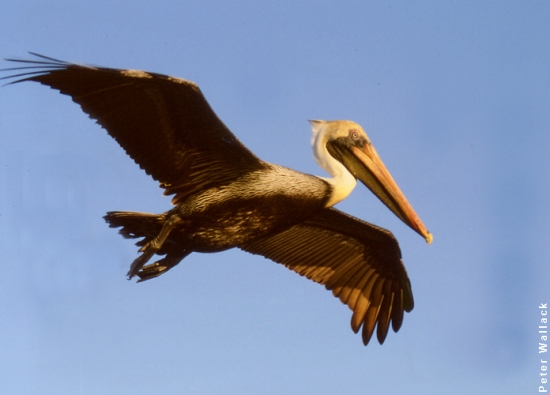Pelecanus erythrorhynchos
Interactions
The number of American white pelicans have been decreasing in number due to habitat loss and pesticide poisoning. However, their numbers have been increasing since the 1970s, due to stricter laws regarding environmental pollutants. Most deaths are due to shootings, even though they have been placed under legal protection with the Migratory Bird Treaty Act of 1918. Recently, some colonies have had nesting failures due to the West Nile virus, which is transmitted through mosquitoes. Chicks are especially vulnerable to this virus. Also, predation by gulls, ravens, wolves, and coyotes is common. Many of the breeding colonies in the U.S. and Canada are threatened by habitat loss, pesticide contamination, and water level disturbances. These birds are considered to be predators to fish such as crayfish, tuna, and herring. They also consume small water animals including amphibians and even turtles. Many white pelicans spend the winters in the company of brown pelicans, their saltwater cousins.
These pelicans can usually be seen flying in a straight line or in a V formation, similar to that seen in geese. The birds seldom fight, although they may jab or grapple. Defending pelicans point or lunge at one another, or close the bill with a sharp snap.
To see how this bird is related to other organisms, visit the classification page.
